
Nine aspects of creating the perfect workplace
We are all different. Without that insight you will not succeed in creating a workplace that the employees will love. This was a main theme at the conference Workplace Trends 2018 in Copenhagen in May.
Workplace Trends are frequent conferences looking at the future real trends in work environments. The spotlight at the May conference 2018 (moderated by Nigel Oseland, Workplace Unlimited and Carsten Svensson, Saint-Gobain Ecophon) in Copenhagen was on subjects ranging from wellness to productivity, sight and sound, design and creativity, as well as different work cultures.
This article is a summary of the Workplace Trends conference in Copenhagen on 9 May 2018. It contains reports of nine talks by the following speakers:
- Tim Oldman, founder of the Leesman Index.
- James Waddell, Managing Director of Poly´s (formerly Plantronics) Habitat Soundscaping Solution.
- Yvette Tietema and Paige Hodsman, Concept Developers, Saint-Gobain Ecophon.
- Pawel Wargocki, International Centre for Indoor Environment and Energy, Department of Civil Engineering, The Technical University of Denmark.
- Charlotte de Reu, Marketing Director and Tomas Fors, Sales Manager at Luctra.
- Rianne Appel-Meulenbroek, Assistant Professor, Eindhoven University of Technology.
- Marlene Dahle, CEO of Mellomrom.
- Christine Kohlert, architect at the RBSGROUP.
- Lene Becker, Director of Laika and Philip Tidd, Principal and Head of Consulting in Europe, Gensler.
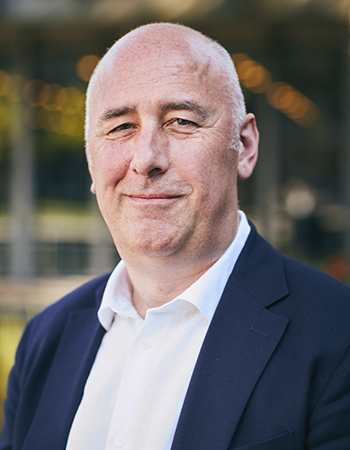 First on stage was Tim Oldman, founder of British Leesman Index, the largest independent workplace effectiveness database. The Leesman Index contains over 330,000 employee responses from more than 2,500 workplaces worldwide. Tim Oldman’s main message was: Stop guessing, start gathering.
First on stage was Tim Oldman, founder of British Leesman Index, the largest independent workplace effectiveness database. The Leesman Index contains over 330,000 employee responses from more than 2,500 workplaces worldwide. Tim Oldman’s main message was: Stop guessing, start gathering.
“You must get an understanding of the employee experience. If you dial down the employee experience, you will dial down effectiveness,” declared Tim Oldman.
The Leesman Index contains a wide range of questions and alternatives including different aspects of the workplace: activities, physical features and services that support the activities, and how the workplace supports the overall sense of productivity and emotional factors such as pride.
Leesman has examined and analysed the concept of Activity Based Working in a major study based on nearly 35,000 respondents. Four profiles of employees were identified, from “Camper squatters”, performing most or all of their activities in a single work setting, to “True transients”, using multiple work settings. True transients are more satisfied overall and feel more productive and proud than other profiles in an Activity Based Working setting.
“The problem is that only ten percent of employees are true transients,” noted Tim Oldman. “This is a catastrophic adoption rate. Activity-based design has to be overlaid with behaviour. If you are not working in an activity-based way, you risk a drop in productivity.”
If you are not working in an activity-based way, you risk a drop in productivity.
What if you hear the sound of waterfalls?
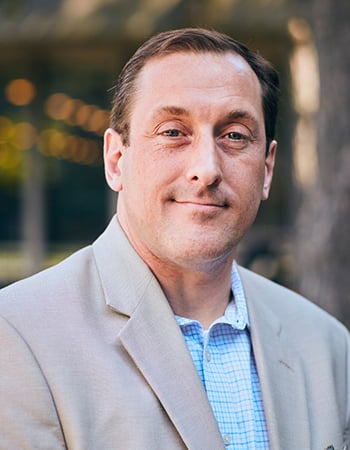 According to the Leesman Index, noise has a big impact on the employee experience. 73.3 per cent state that this is an important factor while only 30.6 per cent say they are satisfied with the noise level.
According to the Leesman Index, noise has a big impact on the employee experience. 73.3 per cent state that this is an important factor while only 30.6 per cent say they are satisfied with the noise level.
But what if you hear the sound of waterfalls, always at the same perceived level, regardless of the number of people in the room and the overall speech level?
James Waddell, Managing Director - Habitat Soundscaping at Poly (formerly Plantronics), introduced its Habitat Soundscaping Solution, offering just that. As modern office design is often open-plan, noise has become an issue, not least due to speech distraction.
“Research shows that it is the intelligibility of speech rather than the level that is the most disturbing. You can have an issue with wrong noise as well as too much noise,” said James Waddell.
Biophilic science shows that workers in office environments with natural elements such as greenery and sunlight report a 15 per cent higher level of wellbeing, a 15 per cent increase in creativity and a six per cent increase in productivity.
Studies show that the sound of water is the most effective speech-masking sound.
The Habitat Soundscaping consists of sensors, loudspeakers and visual effects. Poly´s (formerly Plantronics) tests showed the need for visualising waterfalls, otherwise people will start looking for a water leak or get an acute need to visit the bathroom.
“If you hear water you have to see it as well, or it will make no sense to the brain. It will tell you that something is wrong,” explained James Waddell.
After a Habitat Soundscaping retrofit of Poly´s (formerly Plantronics) own office in Hoofddorf in the Netherlands, satisfaction regarding noise levels increased by 13 per cent, together with a number of other improvements in the employee experience.
We all experience sound differently
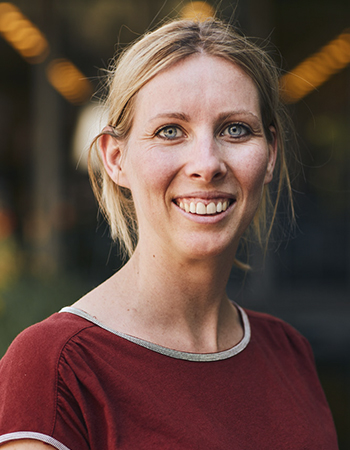 Yvette Tietema and Paige Hodsman of Saint-Gobain Ecophon focused on the human brain in correspondence with sound stimulus in the workplace. But it is not one single Master Brain working here. We are all individuals and are all different, and that also applies to how we experience sound. And even if we are not conscious of surrounding speech, it does affect our brains.
Yvette Tietema and Paige Hodsman of Saint-Gobain Ecophon focused on the human brain in correspondence with sound stimulus in the workplace. But it is not one single Master Brain working here. We are all individuals and are all different, and that also applies to how we experience sound. And even if we are not conscious of surrounding speech, it does affect our brains.
“Eighty per cent of our brain is subconscious,” Yvette Tietema noted.
If you are not having a positive experience of sound, you can adopt different strategies to cope with it. Aggression can be one. Putting on headphones can be another. Raising the issue with your colleagues a third. Here, the subconscious part of the brain starts to work.
“Your brain feels the sound is a potential threat and your body starts producing hormones. This is why it is very important to keep sound levels under control.”
The office layout is of course of great importance. But not only the actual layout, Yvette Tietema stressed.
“You also need to perceive that you have a high level of control over the office environment - that it is predictable.”
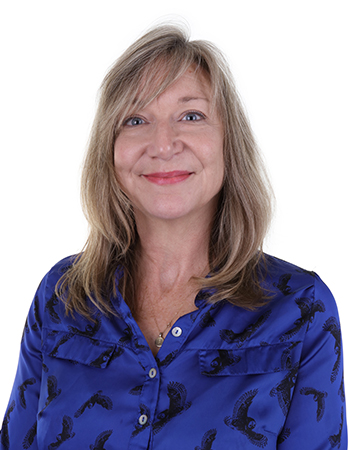 Paige Hodsman has looked more deeply into the psychological factors connected to the sound experience at work, together with workplace strategist Nigel Oseland. They see a number of factors affecting the experience of noise, not only the noise itself. Personality types, the ability to screen, the work activity and place of work are but a few. To be able to turn research into good advice, they have combined different personality profiles by in-depth acoustic surveys.
Paige Hodsman has looked more deeply into the psychological factors connected to the sound experience at work, together with workplace strategist Nigel Oseland. They see a number of factors affecting the experience of noise, not only the noise itself. Personality types, the ability to screen, the work activity and place of work are but a few. To be able to turn research into good advice, they have combined different personality profiles by in-depth acoustic surveys.
“The outcome is a series of solutions in four different layers: an acoustic layer, an activity layer, a zoning layer and a behavioural layer. All depending on the personality and the needs of the individual,” Paige Hodsman explained.
Reasons to pay attention to indoor quality
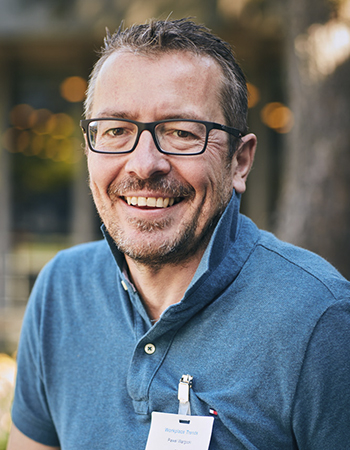 Pawel Wargocki, from the International Centre for Indoor Environment and Energy at the Danish Technical University, turned the audience’s attention to air quality and the indoor climate. He in turn emphasised diversity, that we all have different perceptions and needs.
Pawel Wargocki, from the International Centre for Indoor Environment and Energy at the Danish Technical University, turned the audience’s attention to air quality and the indoor climate. He in turn emphasised diversity, that we all have different perceptions and needs.
The indoor environment quality affects our distractions and attention, motivation, acute health symptoms, sleep quality and absenteeism, Pawel Wargocki pointed out. Quite a list of reasons to pay significant attention to indoor quality.
And it is not only self-estimated. There is evidence that elevated temperature and poor air quality can affect performance negatively by five to ten per cent. At schools, elevated temperature can affect the performance of children by as much as 15 to 20 per cent. One of the factors that the indoor quality affects is sleep. Not a minor issue.
“We sleep more than 20 years during our lifetime. High quality sleep is vital for us. It improves cognitive performance, concentration, next-day performance, and it reduces health risks. But we sleep for a shorter and shorter time. It should therefore be important to help employees to sleep well and also to take a look outside the workplace and how situations there affect your employees,” Pawel Wargocki summed up.
Satisfaction with temperature, noise level and air quality are the most important factors for the self-estimated performance.
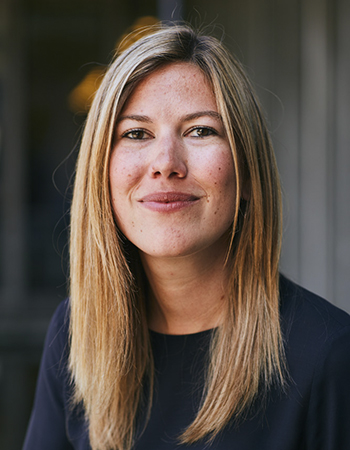 Get light, get sleep, get well
Get light, get sleep, get well
One of the indoor quality parameters is light. Charlotte de Reu and Tomas Fors of lamp manufacturer Luctra highlighted the importance of daylight in the office.
“There is a big discrepancy between natural and electric light. On a sunny day you are exposed to 100,000 lux. Indoors, in offices, we get only 500 lux a day. And people spend 90 per cent of their time indoors,” Tomas Fors said, and continued by connecting with the discussion on sleep.
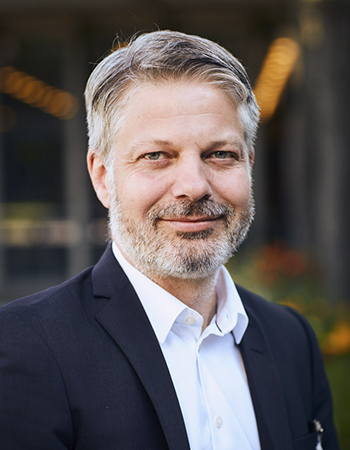 “If you are outdoors, your circadian rhythm will be stabilised. With outdoor light the short-term effect is that you will be more productive. The long-term effect is that you will feel better.”
“If you are outdoors, your circadian rhythm will be stabilised. With outdoor light the short-term effect is that you will be more productive. The long-term effect is that you will feel better.”
Melatonin is the hormone affecting our sleep and circadian rhythm.
“Immediately after turning off the light, melatonin production goes up. With warm light, unlike cold, electric light, melatonin is also produced during daytime and is at a sufficiently high level to result in sleepiness at the end of the day.”
Direct effects of the physical environment
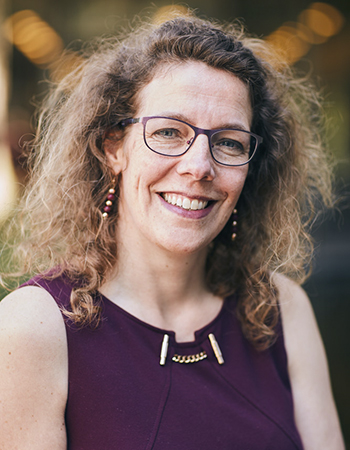 Rianne Appel-Meulenbroek of Eindhoven University of Technology has analysed 134 empirical studies of the effects of physical office environments on employee outcomes.
Rianne Appel-Meulenbroek of Eindhoven University of Technology has analysed 134 empirical studies of the effects of physical office environments on employee outcomes.
“We know that the physical environment has a direct effect on our performance and wellbeing. But we don’t know which aspects are more important than others,” she stated, and continued: “It is impossible to measure productivity in relation to knowledge work.”
Rianne Appel-Meulenbroek quoted Apple’s founder Steve Jobs’ words ‘Design is how it works’ and added: “But what works for whom in what circumstances?”
This is the question she has worked on by analysing scientific articles on the topic published between the 1970s and 2015, using a theory called realistic evaluation, analysing data on mechanisms, contexts and outcomes. Satisfaction and performance are studied as well, but most important is attention on what is missing.
“Factors such as emotional state, concentration, privacy and communication are not so well studied,” Rianne Appel-Meulenbroek said, and summarised what kinds of studies are missing: “We need studies on accessibility and how it affects wellbeing and productivity. I would also like to see studies on how layout and psychosocial factors affect health, wellbeing and the emotional state. Regarding methods, most studies are based on questionnaires. We need to find new methods of research.”
These main research gaps can’t be solved by one discipline only.
“We must work with different disciplines in the research, in a transdisciplinary way, involving researchers as well as non-academic groups.”
Rianne Appel-Meulenbroek has also conducted research on new workplace technologies.
Smart applications can be used to increase employee satisfaction but also to increase productivity and reduce real estate costs. But they need to be used as intended.
So what does the perfect workplace look like?
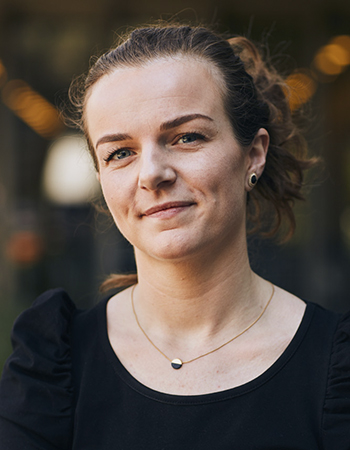 Norwegian workplace consultant company Mellomrom has for many years tried to figure out the answer to this, based on user feedback. In 2015 they initiated the research project SMAP: a Smart Attractive and Productive workplace. The project will result in a standard or certification based on a large set of criteria, different for different types of workplaces. The standard uses a star rating of 1 to 3, depending on the level of employee satisfaction.
Norwegian workplace consultant company Mellomrom has for many years tried to figure out the answer to this, based on user feedback. In 2015 they initiated the research project SMAP: a Smart Attractive and Productive workplace. The project will result in a standard or certification based on a large set of criteria, different for different types of workplaces. The standard uses a star rating of 1 to 3, depending on the level of employee satisfaction.
“We asked people what they want. The answer is that they want what they have today,” Marlene Dahle, CEO of Mellomrom explained.
The SMAP project studies employee reality versus managers’ and architects’ expectations.
“The level of managers’ expectations is often much higher than the staff’s actual situation. So it is important that the managers are involved with the project all the way. They often just start it up,” Marlene Dahle said.
The project has identified a number of indications of how to achieve the perfect workplace. User involvement is important as well as culture and leadership. Physical factors of importance are areas for individual work, creative work and phone/video calls.
“Spaces for individual work need improvement,” Marlene Dahle stated.
The study indicates that over 60 per cent of employees in large open-plan offices are dissatisfied with their workplace.
With biophilia you can improve satisfaction. The more nature there is indoors, the more points you get in the standard.
And the wilder the better. With more nature, people gave the office a higher score for aesthetics.
Six dimensions for wellbeing
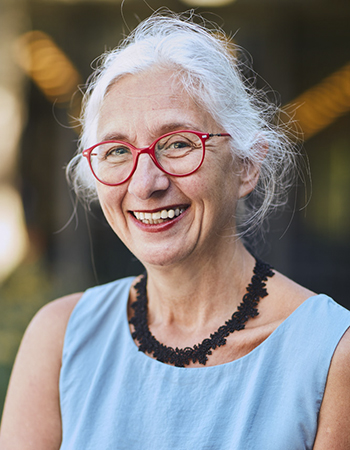 Christine Kohlert, architect from RBSGROUP in Munich and with long experience of academic research, has co-authored Space for Creative Thinking, a book on wellbeing, creativity and health and how to create spaces for working and learning.
Christine Kohlert, architect from RBSGROUP in Munich and with long experience of academic research, has co-authored Space for Creative Thinking, a book on wellbeing, creativity and health and how to create spaces for working and learning.
“For me, the entire organisation becomes a learning and working space and a marketplace of knowledge,” she said.
Satisfaction at work is gained in three steps: physical, functional and psycho-social wellbeing. The last step is the most difficult but still very important.
“It has a lot to do with appreciation, the feeling that I belong and am important.”
Christine Kohlert has identified six dimensions for wellbeing in the workplace.
-
Optimism – fuels creativity and innovation. It can be a kind of personalised homebase, where you see people and people see you.
-
Mindfulness – being fully present in the moment. This demands spaces that help people to meet others face-to-face and to network without distraction. Calm areas that allow for retreat are also required.
-
Authenticity – spaces that encourage you to express own ideas and values.
-
Belonging – spaces that connect you with others. These could be welcoming entrances and informal areas for socialising.
-
Meaning – spaces that reinforce the brand, purpose, history and culture of the company. Walls can be used to visualise thoughts and ideas.
-
Vitality – to foster movement and interaction. The importance of having spaces where you can move furniture and adapt the spaces to the moment. It can also be cafés with healthy food choices and spaces that include nature and daylight.
The essence of these six dimensions is diversity.
“We are all different. There are introverts and extroverts, but everybody is creative in some sense. We are all knowledge workers, but in different ways,” Christine Kohlert said, and concluded:
A space is only as good as the one managing it. If there is no trust between the employees and the management, the workplace will not work at all.
Why the Danes seem to love their work
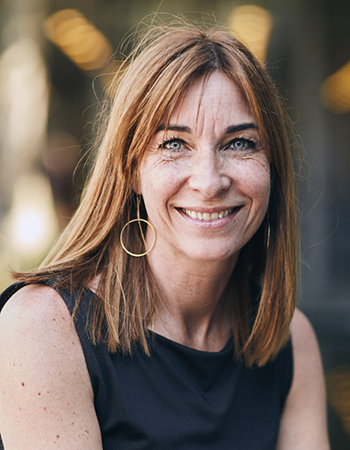 Lene Becker, director of Danish workplace consultants Laika and Philip Tidd of the American workplace consultants Gensler, closed the conference with reflections and insights regarding different work cultures –Danish and British/American. While the Danes and fellow Scandinavians enjoy their work, expressed in a specific word for this, Arbejdsglæde, the Brits and Americans struggle constantly to get their lives and jobs in balance.
Lene Becker, director of Danish workplace consultants Laika and Philip Tidd of the American workplace consultants Gensler, closed the conference with reflections and insights regarding different work cultures –Danish and British/American. While the Danes and fellow Scandinavians enjoy their work, expressed in a specific word for this, Arbejdsglæde, the Brits and Americans struggle constantly to get their lives and jobs in balance.
“We think the scale difference can be an answer. Copenhagen is a relative small city; it takes me seven minutes to cycle to work in the morning,” Lene Becker said.
“I gave up measuring my time after 45 minutes in a traffic jam. It takes me ten times longer to get to work and costs me ten times more compared to Lene,” Philip Tidd explained. “Londoners work three weeks a year more than the rest of the UK.”
With that said, the Brits in general work 266 hours more per year than the Danes.
“You might think we get nothing done. But the Danes are number five amongst the OECD countries as regards efficiency,” Lene Becker added, and reflected over what makes us happy and feel well, in relation to workplace design. She has found four factors: social support, trust, generosity and freedom.
Give people the right facilities in the kind of area they want to do their tasks in. Provide different kinds of collaboration and concentration areas.
The recipe for a happy workplace
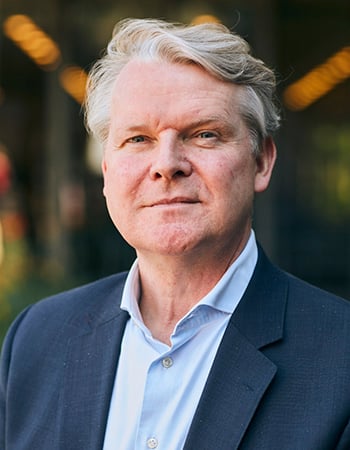 Philip Tidd reflected on the relationship between happiness and productivity.
Philip Tidd reflected on the relationship between happiness and productivity.
“Happy workers mean a 12 per cent increase in productivity. But what are we measuring today? GNP does not measure happiness and satisfaction, the things that really matter in life. And the number of hours you spend at your desk has nothing to do with how efficient you are.”
So what is Philip Tidd’s and Gensler’s recipe for making your workplace happier?
-
Much depends on the management and on building a culture of involvement and trust.
-
Give the employees autonomy and do not practise micro-management.
-
Value beats volume. Build a culture of shorter working hours.
-
Ensure that workloads are manageable. We are hyper-connected and work in an environment that is constantly shouting at us.
We are all different, that is true. But we are probably all equal in our efforts to achieve happiness, wellbeing and the ability to enjoy work and be creative, productive and maybe even innovative. But these efforts mean different things to different people. That is the challenge of the workplace of the future.
Text: Lars Wirtén
Photo: Anders Ebefeldt